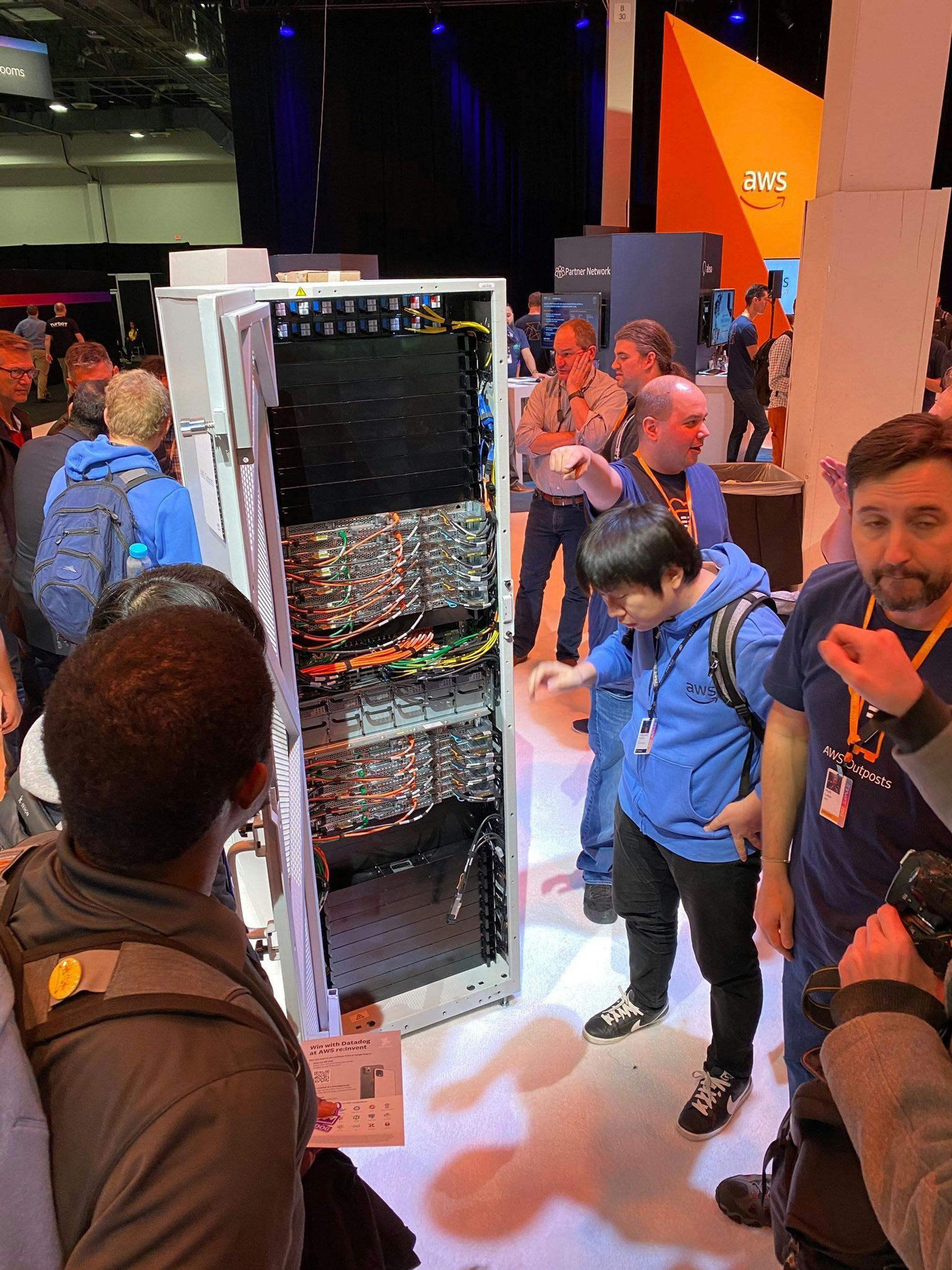

AWS Outpost Deep-Dive with 56K.Cloud
This year, we wrote about hosting AWS Outpost and the interfaces in a Swiss Datacenter context. One of the key topics we showed was "Connectivity Hub." Having Outpost located in a connectivity heavy data center enables customers to reduce the effort to bring these interfaces into the cloud while keeping the ultra-low latency gained by having a local presence. In this blog post, we will dig deeper into how that works, why Outpost brings these advantages, and reduce overall operational costs.
Configuration:
AWS Outpost comes in various standard configurations that offer a starting point for building a customised configuration. When we say customised, we meant the arrangement of CPU, RAM, Network, and Storage. Depending on your workload requirements on the edge, this will ultimately determine the final setup. Racks can also be coupled, up to 16 per availability zone; they can daisy chain across a 100Gbps dual home TOR switches, after which they are then grouped in sets extending up to 3 availability zones. A dedicated AWS Direct Connect is required for each set of 16* (currently supported). It means in the example of eu-central-1, as 3 AZ's 1a,1b,1c one can increase to 48 Outpost racks, require each a pair of AWS DX connections.
The Network:
Being co-located outside of the AWS Regions, networking becomes a critical part of Outpost's operation and dependency. Connectivity is down to two things: Access to AWS Region (Service Link) and Local LAN/WAN access (local outpost access). We see this in the image below shown in yellow and blue, respectively. Both links should be between 1Gbps to 100Gbps, depending on your network's local capability and your traffic requirements.
Physically Implementation in your datacenter or Co-Location facility, it requires two VLANs
The Compute:
CPU is very important here, as Outpost is advertised showing Physical CPU count, as in real CPU cores like on your laptop or non-virtualisation server. On top of the bare-metal server comes
The Storage
All outposts come with a basic set of storage in place, offered in both EBS and S3, it starts at 11TB and goes up to 55TB per rack.
Operations:
The share responsibility matrix was are all well use ot is a little extended, this is simple due to the fact that the co-location, your IT or vendor now take part of that responsibility and it's important this different is understood.
Reference:
When running IaaC pipeline and automation tools such as Terraform
Good Deep Dive
Good series of podcasts:
Part 1 https://www.youtube.com/watch?v=IporFzpk4MY&t=551s
Part 3 (but published first in July 2020 ;) )
(Watch out for the Q/A at the end, some great answers give a insight to how one can scale outpost)
Outposts overview:aws.amazon.com/outposts/
Videos, documentation, and blog resources:aws.amazon.com/outposts/resources/
Outposts frequently asked questions:aws.amazon.com/outposts/faqs/
Outposts User Guide:
references: https://msandbu.org/amazon-outpost-vs-azure-stack-hub/
Outpost target market we are focusing on
View on Outpost fr
As an AWS APN Partner and Outpost Partner for Outpost we are happy to engage in Multi-Access Edge Compute (MEC) works, and we'd be happy to share with you our reference architecture for AWS Outpost
Find out more about 56K.Cloud
We love Cloud, IoT, Containers, DevOps, and Infrastructure as Code. If you are interested in chatting connect with us on Twitter or drop us an email: info@56K.Cloud. We hope you found this article helpful. If there is anything you would like to contribute or you have questions, please let us know!